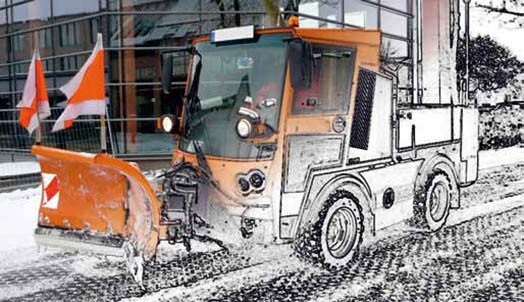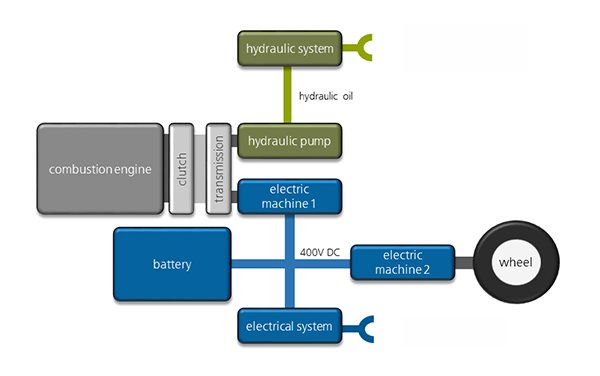Fully Electric Driving
The energy stored in HY²PE²R’s battery enables fully electric, emission-free operation. This operating mode is very quiet, which is especially desirable for applications such as snow ploughing in the early morning or late at night. Because the traction motor (electric machine 2) also works as a generator, braking energy can be restored to the battery, which reduces brake wear and increases the vehicles’ electric range.
Hydraulic Operation
By opening the clutch that connects the combustion engine and the transmission, electric machine 1 is able to drive the hydraulic pump at very low speed and in a needs-based way. This operating mode saves up to 80 % of energy when used together with a hydraulic lift on the vehicle, and it is especially silent.
Electric Implements
Hydraulic implements are the technological state of the art for commercial vehicles. Until very recently, hydraulic systems were unrivaled in terms of installation space and performance, but they are increasingly being challenged by fully electric approaches. Especially regarding efficiency, electric systems are far superior to hydraulic ones: they can be connected to the 400 V DC intermediate circuit, do not need hydraulic pipes and can be controlled highly dynamically. Because of these advantages, electric systems are the future of implement drives for commercial vehicles.
Conventional Hydraulic Systems
Until the realization of fully electric implements, it is necessary to execute a large number of processes with conventional hydraulic support. For these cases, the drive train can be operated conventionally. The clutch that connects the combustion engine and the transmission is closed and the hydraulic pump is driven directly by the combustion engine.

